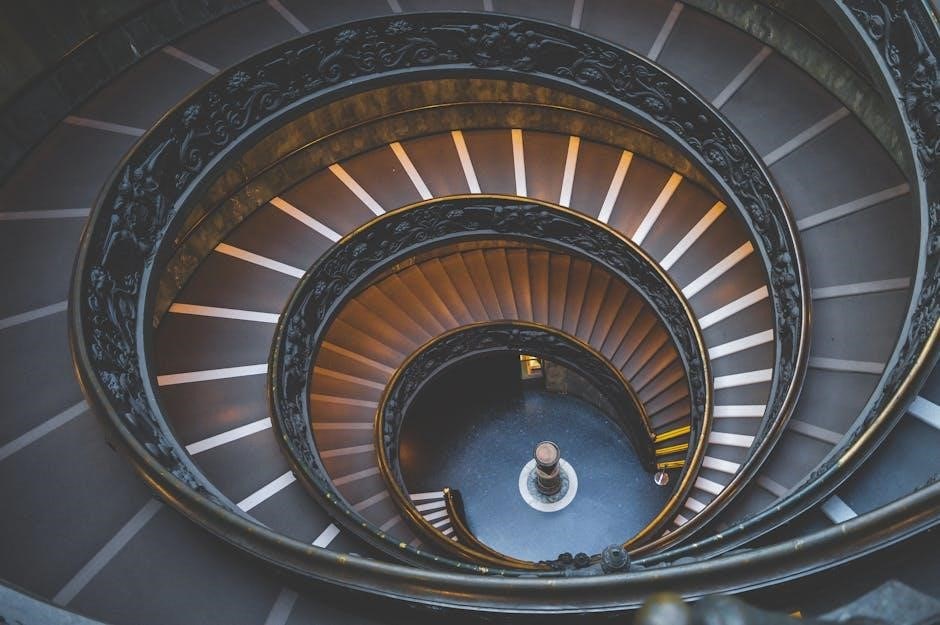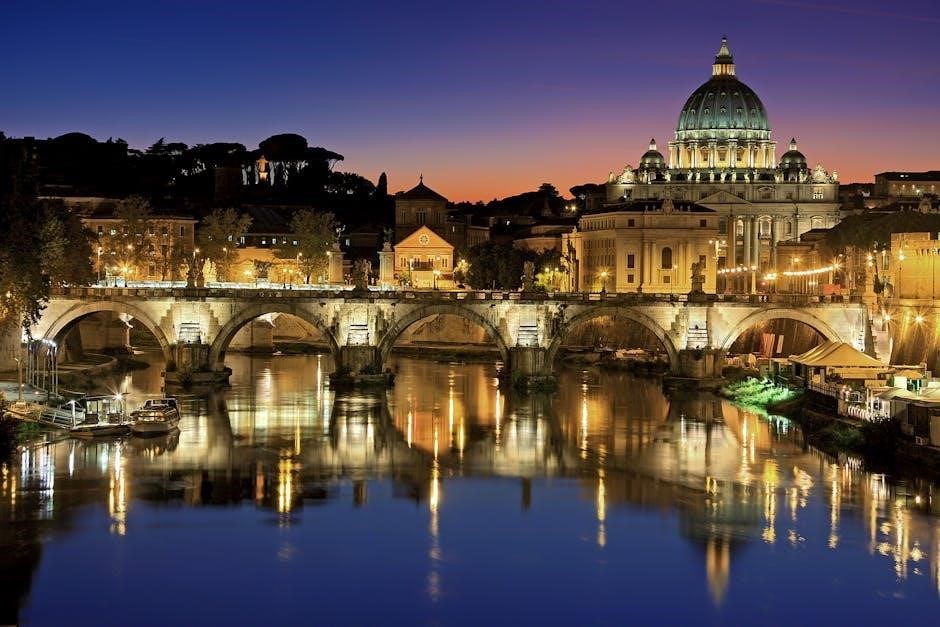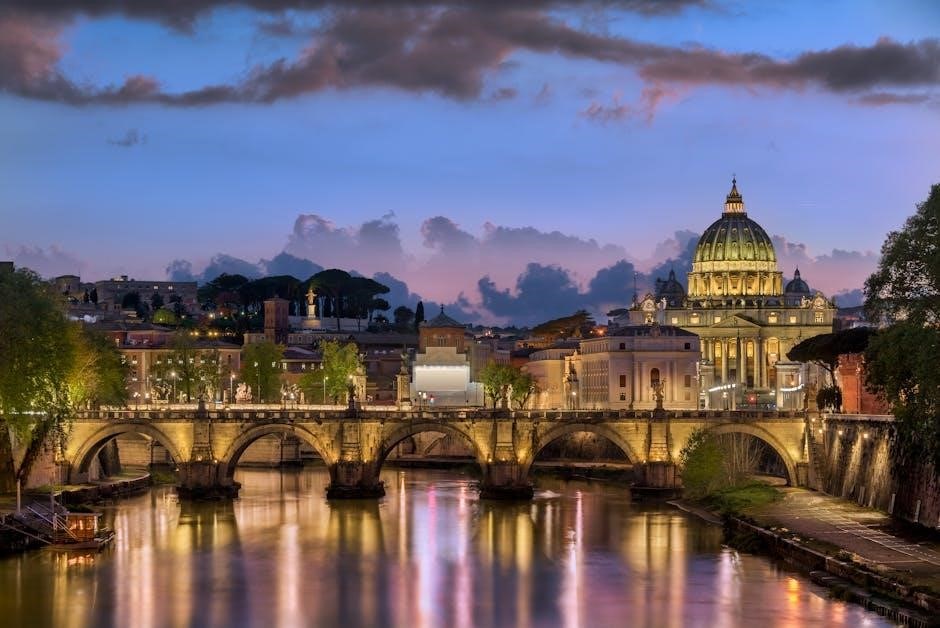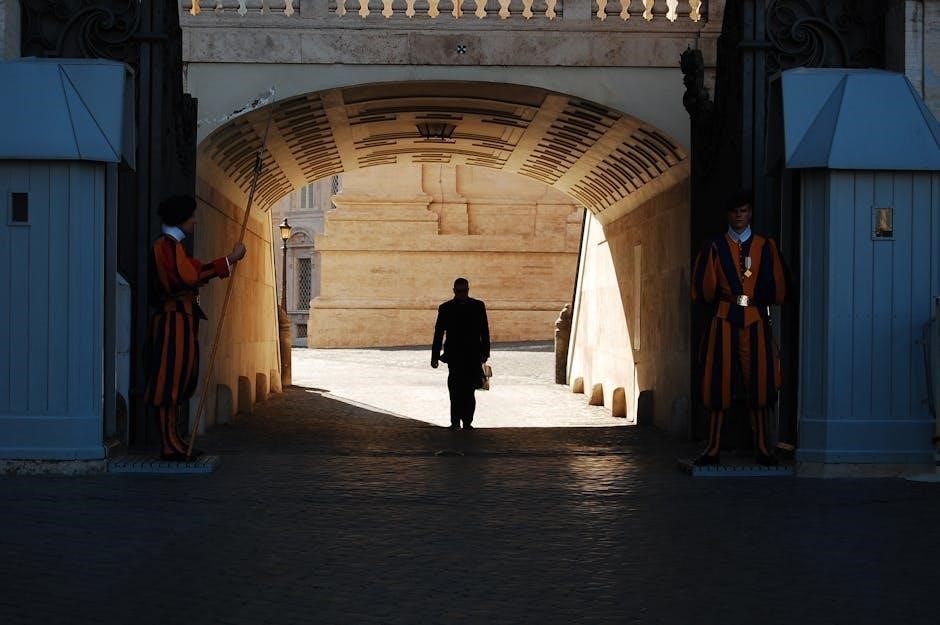Delve into the hidden world of the Vatican with intriguing documents such as “Secrets of the Vatican.pdf.” Explore the historical context, key figures, and mysteries surrounding the Catholic Church’s most guarded information. Uncover the truth today!

The History of the Vatican
From persecuted cult in Rome to the world’s largest organized religion, the Catholic Church’s rise is chronicled in “Secrets of the Vatican.” Discover the key events and influential figures that shaped its history and power.
Rise of the Catholic Church
The Catholic Church’s ascent from humble beginnings to global influence is a captivating narrative. Its early days as a persecuted cult in Rome gradually transformed into its establishment as the world’s largest organized religion. This transformation is a central theme in understanding the Vatican’s history and secrets. The Church’s growth was marked by key events, influential figures, and strategic decisions that solidified its power and reach. Examining this rise provides crucial insights into the Vatican’s present-day role and its enduring impact on society. From its spiritual foundations to its political maneuvering, the Church’s journey is a complex tapestry woven with faith, ambition, and intrigue.

Accessing Information: Vatican Archives
Discover how researchers gain access to the Vatican Archives, a treasure trove of historical documents. Learn about the process, restrictions, and the types of information available to scholars seeking to uncover the past.
Opening to Researchers
The Vatican Secret Archives, once shrouded in mystery, have gradually opened to researchers, offering glimpses into centuries of history. Pope Leo XIII initiated this shift in 1881, granting scholars access to materials that were previously inaccessible. While not entirely “secret” anymore, access remains regulated, requiring proper credentials and adherence to specific protocols.
Researchers can explore a vast collection of documents, shedding light on papal history, diplomatic relations, and various aspects of the Church’s influence throughout the ages. The archives continue to be a vital resource for historians and scholars worldwide, fostering a deeper understanding of the Vatican’s role in shaping global events.
Key Figures in Vatican History
Explore the lives and legacies of influential figures like Pope Leo XIII and Pope Paul V, who shaped the Vatican’s history. Their actions and decisions have had a lasting impact on the Catholic Church.
Pope Leo XIII
Pope Leo XIII, reigning from 1878 to 1903, left an indelible mark on the Catholic Church. Notably, he opened the Vatican Archives to researchers in 1881, a pivotal moment in accessing historical information. This decision allowed scholars to delve into the vast collection of documents, shedding light on the Church’s history and secrets.
His pontificate also addressed social issues through encyclicals, influencing Catholic social teaching. He navigated complex political landscapes, seeking to reconcile the Church with the modern world. Pope Leo XIII’s contributions continue to shape the Vatican’s role and influence today.
Pope Paul V
Pope Paul V, who reigned from 1605 to 1621, played a significant role in the history of the Vatican. A key event during his papacy was the establishment of the Vatican Secret Archives in 1612. This decision centralized and organized sensitive documents, creating a repository of information that would remain largely hidden for centuries.
His pontificate was marked by conflicts with various states, asserting papal authority. The creation of the Secret Archives solidified the Vatican’s control over its historical records. Pope Paul V’s legacy includes both strengthening the Church’s administrative structures and preserving its secrets.
Notable Documents and Files
Explore intriguing Vatican files: “The Secrets of the Vatican.pdf,” revealing historical insights. “A Call From the Vatican.pdf” offers unique perspectives. “The Third Secret Regards Apostasy in the Church.pdf” delves into controversial topics.
The Secrets of the Vatican.pdf
“The Secrets of the Vatican.pdf,” dating back to 1907, unveils a historical exploration by Douglas Brooke Wheelton Sladen. This 24.58 MB file offers a glimpse into the Vatican’s past. To access it, a PDF reader is required. For large files, a download manager is recommended to prevent interruptions during the download process.
This document, part of the collection exploring the mysteries surrounding the Roman Catholic Church, provides insights into events and aspects that the Holy See has historically kept confidential. Discover the historical context and secrets contained within this intriguing file.
A Call From the Vatican.pdf
“A Call From the Vatican.pdf,” dated March 17, 1990, presents a document available for free download. This file offers insights into communications originating from the Vatican. It can be accessed as a PDF file. The contents may reveal aspects of Vatican operations, decisions, or interactions with external entities.
The availability of this document provides an opportunity to examine details of a specific communication event. By exploring the content, one can potentially gain insights into the Vatican’s role, influence, and historical context during that period. It offers a direct look at a historical interaction.
The Third Secret Regards Apostasy in the Church.pdf
“The Third Secret Regards Apostasy in the Church.pdf” is a document available for free download in various formats, including Word Doc (.doc/.docx), PDF, and Text File (.txt). This file delves into the interpretation of the Third Secret of Fatima, specifically focusing on the concept of apostasy within the Catholic Church.
The document offers insights into theological discussions surrounding the secret, potentially exploring perspectives on internal challenges and crises faced by the Church. By examining this file, readers can gain a deeper understanding of the interpretations and concerns related to the Third Secret and its implications for the Catholic faith.

The Secrets of the Vatican by Douglas Sladen
Explore Douglas Sladen’s “The Secrets of the Vatican,” available in PDF, plain text, ePub, and DAISY formats. Uncover hidden truths within the Vatican’s walls and delve into its enigmatic history through Sladen’s detailed exploration.
Download Options: PDF, Plain Text, ePub, DAISY
Accessing “The Secrets of the Vatican” by Douglas Sladen is made convenient with multiple download options. Choose the PDF format for a visually rich, print-ready version, or opt for plain text for a simple, unformatted read. For e-readers, the ePub format offers an optimized experience, while DAISY provides accessibility features for those with visual impairments.
Each format caters to different reading preferences and devices, ensuring that everyone can delve into the mysteries of the Vatican. Select the option that best suits your needs and embark on a journey through history and intrigue with this captivating exploration of Vatican secrets.
Mysteries and Conspiracies
Unravel the enigmas and plots surrounding the Vatican, from historical mysteries to modern-day conspiracies. Explore the shadows and secrets that have fueled speculation and intrigue for centuries, as revealed in various documents and narratives.
The Da Vinci Code
While Dan Brown’s “The Da Vinci Code” presents a fictionalized conspiracy, it touches upon the real aura of mystery surrounding the Vatican and the Catholic Church. This novel ignited public curiosity about the potential secrets held within the Vatican’s archives, even if the specific claims in the book are not factual. The novel prompts consideration of historical events and narratives that the Holy See might have preferred to keep hidden.
It contributes to a broader interest in exploring the line between fact and fiction when examining the history and influence of the Vatican, inspiring readers to delve deeper into documented accounts;
Dark Secrets of the Vatican Revealed (PDF)
Documents circulating online, such as “Dark Secrets of the Vatican Revealed (PDF),” claim to expose controversial aspects of the Vatican’s history. These sources often delve into allegations of historical cover-ups, financial impropriety, and abuse. While the veracity of the information presented in these PDFs can vary, they contribute to ongoing discussions about accountability and transparency within the Catholic Church.
Readers are encouraged to approach such materials with a critical eye, cross-referencing claims with established historical sources and scholarly analysis. These PDFs reflect a persistent public interest in uncovering hidden truths related to the Vatican’s power and influence throughout history.
Vatican’s Role and Influence
The Vatican’s role extends beyond religious leadership, wielding considerable influence in global politics, finance, and culture. As the headquarters of the Catholic Church, it navigates complex international relations, advocating for its values and engaging in diplomatic efforts. Historical archives, partly accessible to researchers, reveal insights into the Vatican’s decision-making processes and its involvement in significant world events.
However, this influence has also faced scrutiny, particularly concerning its handling of sensitive issues and allegations of secrecy. Analyzing the Vatican’s actions requires considering its unique position as both a spiritual authority and a sovereign entity with far-reaching consequences.

Ecumenism, Roman Roots of Vatican & Pagan Catholicism
Ecumenism, the movement promoting Christian unity, intersects with the Vatican’s role in bridging theological divides. Exploring the Roman roots of the Vatican reveals its historical evolution, influenced by both Christian and pre-Christian traditions. The concept of “Pagan Catholicism” arises from the syncretism, or blending, of ancient pagan practices with Christian beliefs during the early Church’s development.
Investigating this intersection involves scrutinizing historical documents and theological interpretations. Critiques often focus on perceived inconsistencies between orthodox Christian doctrine and elements inherited from Roman paganism. Understanding these dynamics sheds light on the complex tapestry of the Vatican’s historical and theological identity, fostering ongoing discussions about faith and tradition.
